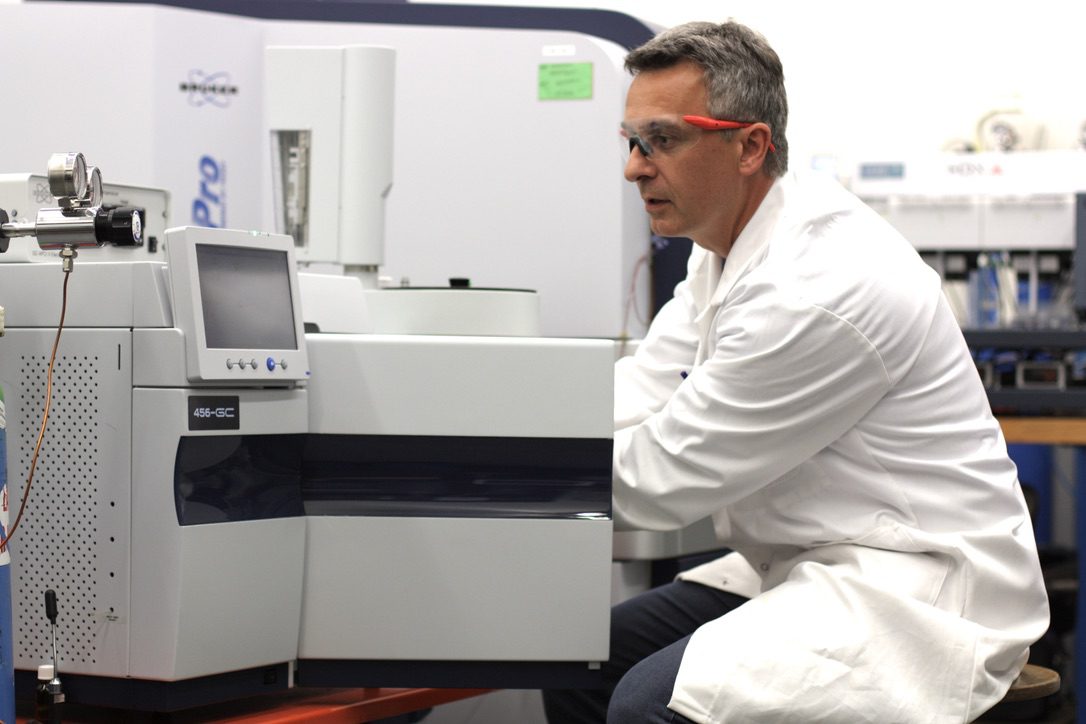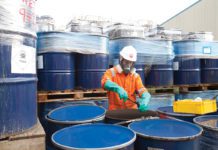
By Gauthier Eppe
Persistent organic pollutants (POPs) are toxic chemicals that pose a significant threat to human health and the environment. Widely used during the post-war industrial boom of the 1940s and ‘50s, many of the synthetic chemicals introduced were used in crop production and the manufacture of a range of household goods. These chemicals have had unforeseen adverse effects, largely because of their non-biodegradability. To combat this issue, international agreements, such as the Stockholm Convention on Persistent Organic Pollutants, finalized in 2001, have been established to control and phase out the production and use of these hazardous chemicals.1 This article explores the limitations of current analytical methods for POPs and discusses how trapped ion mobility spectrometry (TIMS) is setting new standards in the field of POPs analysis.
The persistence of POPs
POPs are toxic organic chemical substances that are resistant to degradation and have been used extensively in pesticide and industrial chemical manufacture and released during chemical and agricultural processes. POPs are ubiquitous in our environment (water systems, soil, air and sediments) and they bioaccumulate, passing from species to species through the trophic chain, ultimately ending up in the human body. POPs are a serious health concern and are known to cause a number of health implications including cancer, neurological damage, birth defects, immune system defects, learning disabilities, endocrine disruption and reproductive disorders.2
Per- and polyfluoroalkyl substances (PFAS) are considered POPs and are known for their water- and stain-resistant properties.3 The Environmental Protection Agency (EPA) recently proposed the first federal limits on PFAS chemicals in drinking water in the US.4 However, the complexity of analyzing POPs and the emergence of new potential contaminants continue to challenge mitigation efforts.
Current methods of analyzing POPs
The gold standard method for POPs analysis is gas chromatography coupled with sector high-resolution mass spectrometry (GC-HRMS) in selected ion monitoring mode. While this technique is powerful and effective, it is primarily used to analyze targeted compounds of interest. Targeted analysis, however, only detects known compounds – and will miss the many new POPs that are emerging as a result of their persistence or chemicals breaking down and decomposing in the environment.
Many POPs are not identified, as regulatory bodies only monitor known contaminants. This means there is insufficient information regarding the potentially thousands of unregulated compounds synthesized by the chemical industry, including potential precursors and by-products that may give rise to even more harmful substances. New contaminants are constantly emerging in the environment and the food chain; therefore, it is vital to broaden the scope of analysis and develop new methods that not only consider legacy POPs, but also address those that are emerging.
This limitation of targeted analysis hinders the comprehensive analysis of complex environmental, food, and human blood samples, which contain numerous other compounds that can interfere with accurate detection and quantification. Additionally, many contaminants exist in extremely small quantities, often in sub-parts per trillion, necessitating more advanced equipment with higher specificity and sensitivity.

Faster and more accurate POPs analysis
Scientists from the Université de Liège, Belgium, are using trapped ion mass spectrometry coupled with time-of-flight (TIMS-TOF) to address the limitations of current analytical methods in detecting and monitoring POPs. Gauthier Eppe, Full Professor and Director of the MSLab and the Molecular Systems (MolSys) Research Unit at the Université de Liège, combines the precision of high-resolution mass spectrometry with software to offer rapid and accurate analysis of a wide range of contaminants such as dioxins, PFAS, and pesticides.
The difference between TIMS-TOF and other analytical methods is its unique combination of high-resolution mass spectrometry and trapped ion mobility spectrometry, a gas-phase separation technique. Adding an additional dimension of separation improves the accuracy and confidence in compound characterization within complex samples. As the technique accumulates and concentrates ions of a given mass and mobility simultaneously, it increases both the sensitivity and speed of analyses. The sensitivity of TIMS-TOF can detect extremely low levels of contaminants that cannot be detected with other conventional methods, making it ideal for analyzing and detecting even the smallest trace amounts of POPs.
Prof. Eppe has contributed to the development of various multi-residue analytical techniques, encompassing exposure characterization from agricultural supplies, food products and human biomonitoring in biological fluids. Together with his team, he is now developing and applying global untargeted characterization approaches in biological and environmental samples, specifically focusing on emerging halogenated POPs but also in metabolomics and lipidomics, utilizing mass spectrometry detection techniques such as TIMS-TOF. Prof. Eppe and his team are investigating the intricate molecular responses and biomolecular alterations induced by POPs exposure. TIMS-TOF facilitates the analysis of specified POPs as well as the detection of novel, untargeted POPs, providing an accurate and comprehensive assessment of the possible exposure to contaminants.
Advancements in POPs analysis
As POPs can enter the food chain through various environmental sources, which contaminate food webs and aquatic ecosystems, collaborations with food manufacturers are needed to monitor contamination in the food supply chain. Due to their persistence and ability to biomagnify as they move up the food chain, POPs can become concentrated in high trophic-level species, leading to elevated amounts in foods such as meat, dairy products, and fish. POPs are lipophilic, which means that they accumulate in the fatty tissue of living animals and human beings. In fatty tissue, the concentrations can become magnified by up to 70,000 times higher than the background levels.5
New sensitivity in food contaminant analysis
POPs pose a significant threat to human health and the environment. While international agreements and regulations aim to control and phase out the production and use of these hazardous chemicals, the complexity of POPs analysis and continuous development of new POPs is hindering efforts.
The work of Prof. Eppe and the team at the Université de Liège has led to significant advancements in POPs analysis using TIMS-TOF. Combining high-resolution mass spectrometry and trapped ion mobility spectrometry offers rapid and accurate analysis of a wide range of contaminants, including those found in food products. TIMS-TOF provides researchers with the necessary sensitivity and versatility to detect even the smallest trace amounts of POPs, ensuring food safety and protecting human health.
By continuously monitoring POPs and advancing analytical methods, researchers can collect valuable data on harmful non-target compounds, advocate for their ban, incorporate them into legislation and contribute to provide reliable and extensive data to the exposome concept. The advancements in analytical methods are paving the way for a safer and healthier future.
References
[1] Lallas, Peter L., “The Stockholm Convention on persistent organic pollutants.” American Journal of International Law 95.3 (2001): 692-708
[2] Food safety: Persistent organic pollutants (POPs), World Health Organization, November 20, 2020. Accessed October 27, 2023. https://www.who.int/news-room/questions-and-answers/item/food-safety-persistent-organic-pollutants-(pops)
[3] Lindwall C, Ginty MM. “Forever chemicals” called pfas show up in your food, clothes, and home. NRDC. April 12, 2023. Accessed November 15, 2023. https://www.nrdc.org/stories/forever-chemicals-called-pfas-show-your-food-clothes-and-home.
[4] Phillis, M., “EPA to limit toxic ‘forever chemicals’ in drinking water.” AP News, 2023. https://apnews.com/article/epa-pfas-forever-chemicals-water-contamination-regulations-560d0ce3321e7fa8ed052f792c24f16f
[5] Persistent organic pollutants (POPs) and pesticides. Persistent Organic Pollutants (POPs) and Pesticides. Accessed November 2, 2023. https://www.unep.org/cep/persistent-organic-pollutants-pops-and-pesticides.








